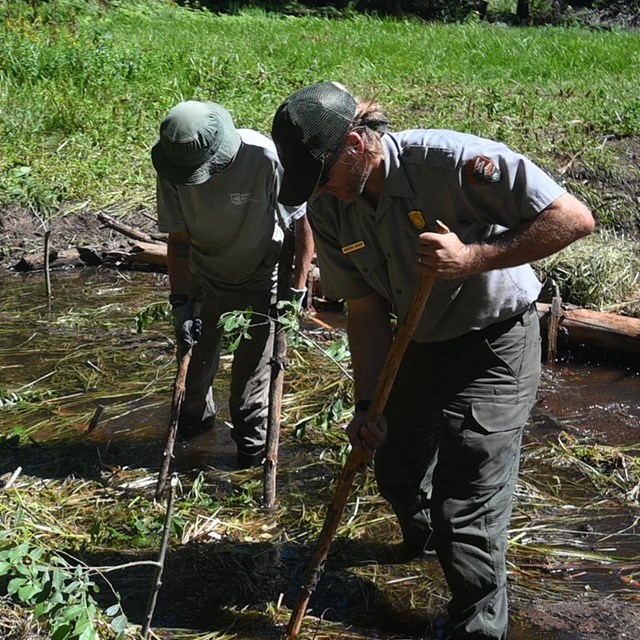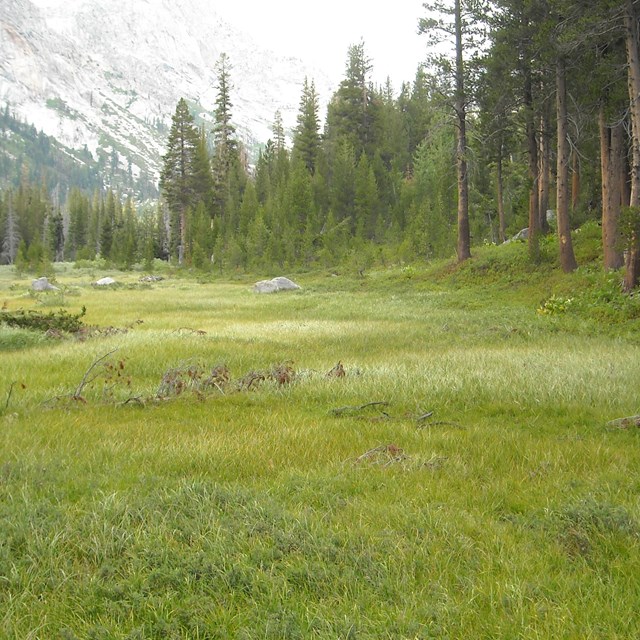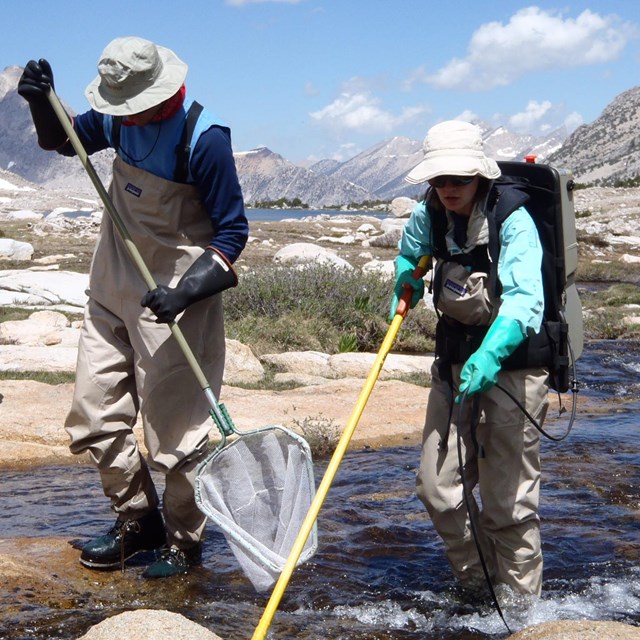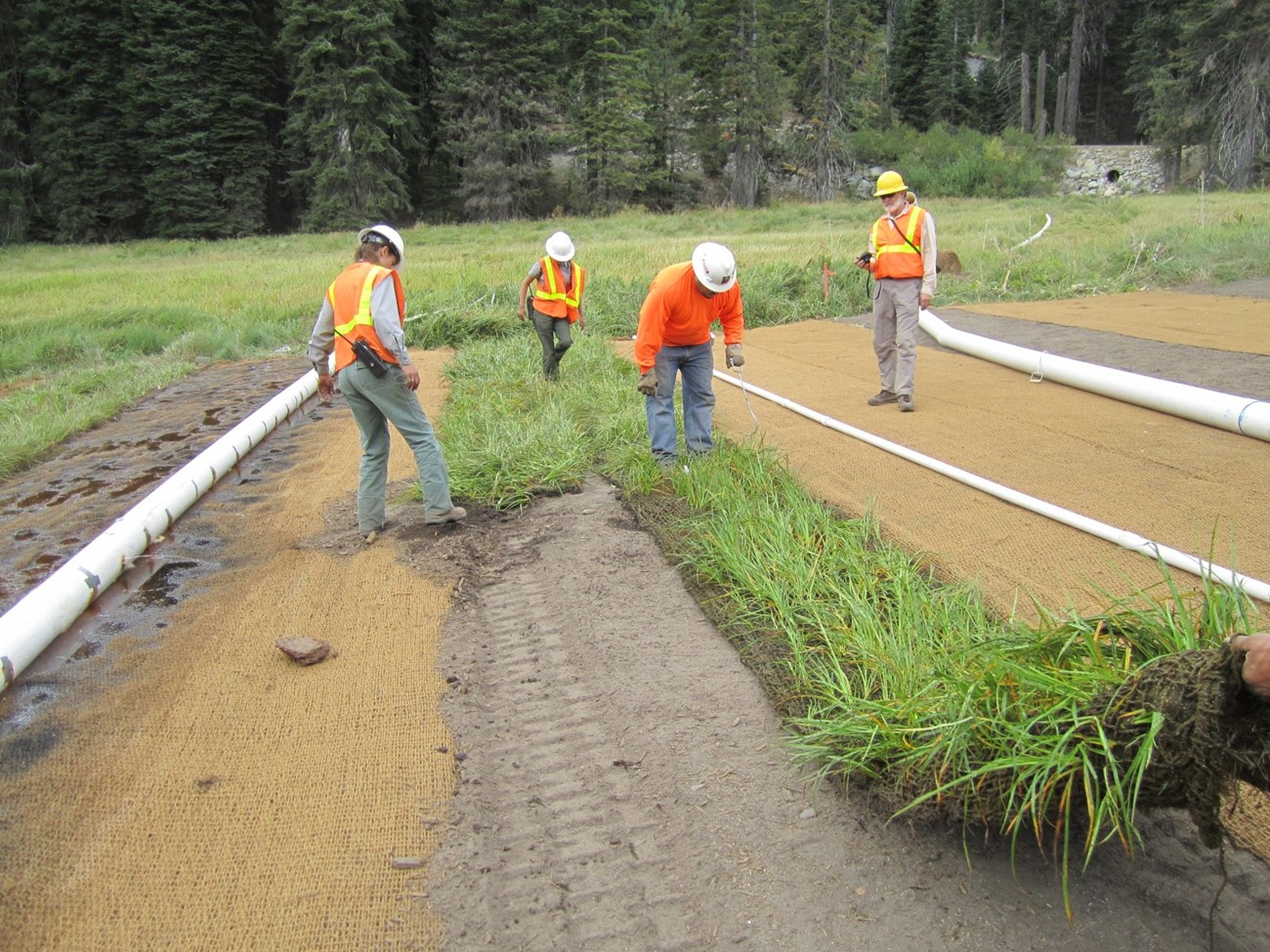
Halstead Meadow, a 20-acre wetland located about 5 miles north of the Lodgepole area in Sequoia National Park, transformed from a badly eroded wetland to a restored wetland, thanks to a successful restoration project between 2007 and 2013. A New Vision for RestorationIn 2005, park staff began a new restoration effort with a different vision: convert the channelized system back to a sheet-flow system (water flowing across meadow surface) by:
National Park Service staff, led by Restoration Ecologist Athena Demetry, cooperated with Colorado State University scientists David Cooper and Evan Wolf to study reference meadows (less disturbed meadows), design a pilot restoration project to test new methods, carry out the pilot, and monitor results. Phase 1: Upper Halstead Meadow Pilot Restoration (2007-2009)
The Upper Halstead Meadow pilot restoration project began in September 2007. Contractors filled the gully with 8,000 cubic yards of local fill using heavy equipment, placed erosion control blanket and logs to slow and spread water, and planted 53,000 native wetland plants in Spring 2008. The project team successfully restored sheet flow of water, and higher water tables (within 6 inches of the ground surface) through the summer. Native wetland plants were growing and spreading, and formerly dry (de-watered) areas were converting to a plant community more similar to heathier reference site meadows. But then, there was... 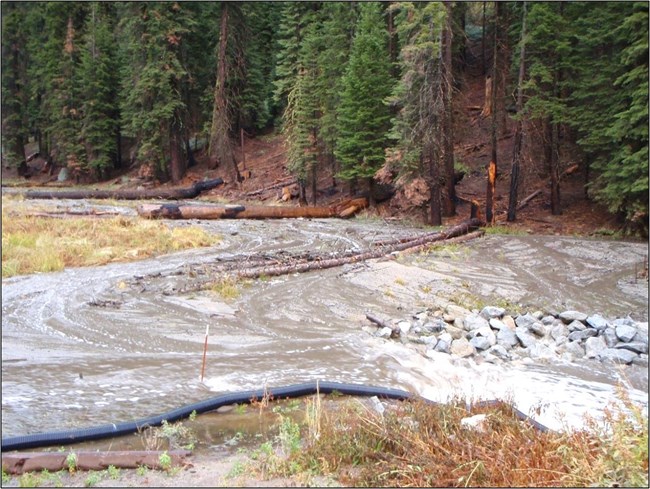
A Curve Ball from NatureOn October 13, 2009, the site received 8-10 inches of rain in 24 hours. This big storm created a new gully, and 600 of the 8,000 cubic yards of soil and other material that had been added to fill the gully eroded away. The team quickly repaired the gully in November 2009, planted 12,000 wetland plants in the repair area, and learned from the experience that they did not adequately plan for high-flow events. A key element to the approach used in restoring Halstead Meadow was that a thick native wetland sod would develop to hold the fill in place during the deep, high velocity flows of a flood event. The dense, aboveground stems of native wetland vegetation would also slow and spread the water during a flood event. Until that dense sod established, which can take 5 to 10 years after planting, the restoration project was vulnerable to new gully formation during storm events or high spring runoff. Ecological Restoration: A Learning ProcessAspects of ecological restoration are like an experiment. Specialists and those with local knowledge plan and carry out approaches they think will work. But things will go wrong, and success requires learning from what goes wrong, and trying again. It can be discouragning when a big rain event washes away some of your work. In the first years when new plants are still growing, the meadow is vulnerable to floods. So, it's necessary to figure out how best to stabiliize the site in those early years.

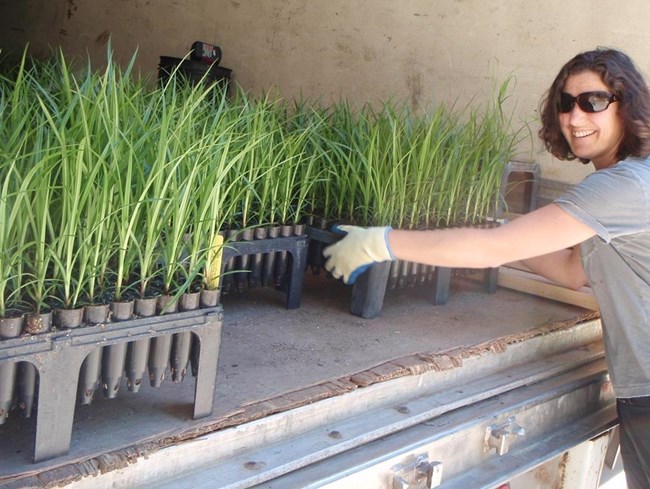
Several different approaches helped establish more dense plant cover and sod that could better slow water and minimize erosion during storms:

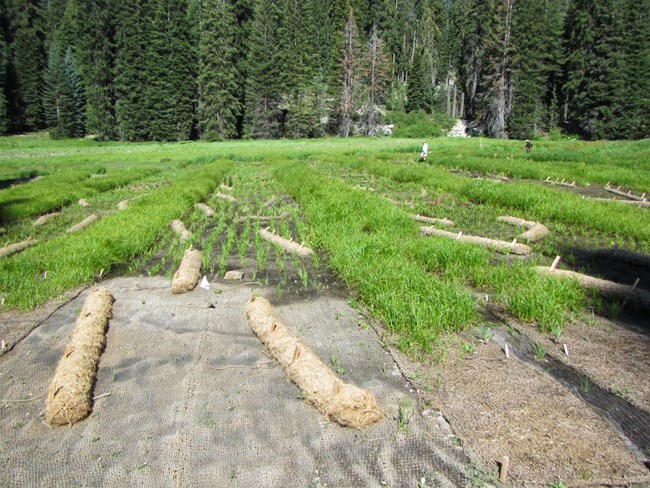
Evan Wolf, Colorado State University Phase 2: Bridge Construction and Lower Meadow Restoration (2011-2012)Construction of a bridge to create a sustainable road crossing and maximize the spread of water flows began in 2011. Lower meadow restoration began in July 2012. The restoration team filled the gully with 16,000 cubic yards of fill and employed new methods to withstand flood flows prior to plant establishment. These included the approaches described above, that reduced soil compaction and utilized larger plants and well-developed wetland sod from the gully or acquired commercially. Other strategies included:
With the bridge completion in September, 2012, sheet flow of water was established between the upper and lower meadow for the first time in 80 years. A total of 87,800 plants and 0.5 acre of wetland sod were installed in fall 2012 and spring 2013. Very low precipitation during the winter of 2012-2013 helped to minimize erosion damage during the first storm season for this project. Halstead Meadow Restoration, Sequoia National Park 
Left image
Right image
The Biggest Lesson LearnedSevere gullies can be restored to pre-disturbance wetland conditions if prepared to learn from mistakes and to persist.
Photo courtesy of Evan Wolf, Wetland Ecologist, Colorado State University Wetland importance and restoration
|
Last updated: April 22, 2024

